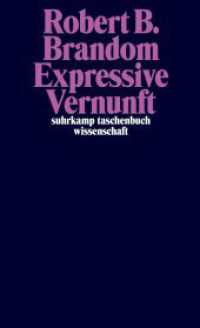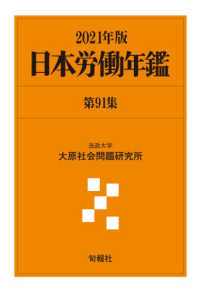Full Description
This book offers broad, practical strategies for teaching science and engineering courses and describes how faculty can provide a learning environment that helps students comprehend the nature of science, understand science concepts, and solve problems in science courses. The student-centered approach focuses on two main themes: reflective writing and working in collaborative groups. When faculty incorporate methods into their courses that challenge their students to critically reflect, collaborate, and problem solve, students gain a better understanding of science as a connected structure of concepts rather than as a simple tool kit of assorted practices. Contents include:* Reflective writing* Writing to learn* Constructing student knowledge* Selected methods for using collaborative groups* Changing students' epistemologies* Training students to solve problems* Using technology to aid your teaching
Contents
About the Author. Acknowledgments. Author Note. 1 Introduction. Teacher-Centered Learning. Road Map of the Book. Summary. 2 Reflective Writing. Freewriting. The Bereiter and Scardamalia Model. Objectives of the Reflective Writing Activity. How to Do Reflective Writing. Summary. 3 Writing-to-Learn. Reflective Write-Pair-Share. The Course Dossier Method. Hosting an End-of-Semester Conference. Summary. 4 Constructing Student Knowledge. Students' Intellectual Development. Student Misconceptions. Critical Thinking. Summary. 5 Collaborative Groups. Team Work and Group Projects. Group Development. Roles for Group Members. Dealing With Dysfunctional Groups. Summary. 6 Selected Methods for Using Collaborative Groups. Conceptual Conflict. Overview of the Conceptual Change Experiment. Jigsaw. The Learning Cell. Collaborative Concept Mapping. Summary. 7 Changing Students' Epistemologies. Constructing an Epistemology. Summary. 8 Problem Solving. Solving Problems Using Templates Versus Solutions Using Paradigms. Five-Step Method for Solving Problems. Problem-Solving Strategies. Summary. 9 Methods for Training Students to Solve Problems. Writing Their Way Into the Solution. Collaborative Problem-Solving Groups. Summary. 10 Using the Computer to Aid Teaching. Computer-Assisted Instruction. Using the Computer to Manage Laboratories. Summary. Suggested Readings. Bibliography. Index.








